Welcome to my guide to the best lenses for the Sony A6700 mirrorless camera in 2025.
With 22 native Sony APS-C and 48 full-frame E-mount lenses available and many more from third parties like Tamron and Sigma, finding the best lens for the A6700 can be a challenge.
Therefore I’ve narrowed down your choice to 13 of the best Sony E-mount lenses available today and summarised them in this article. I include their pros and cons as well as links to helpful reviews to learn more about each lens.
To view all of the Sony E-mount lenses available please visit my Complete List of Sony E-mount Lenses where you can also find the latest firmware version for each lens.

Table of Contents[Hide][Show]
- Compatible Lenses
Top 13 Lens Recommendations in 2025+−
- 1. Sony E 10-20mm F4 PZ G
- 2. Sigma 10-18mm F2.8 DC DN
- 3. Sigma 16mm F1.4 DC DN Contemporary
- 4. Sony E 16-55mm F2.8 G
- 5. Tamron 17-70mm f/2.8 Di III-A VC RXD
- 6. Sony E 18-135mm F3.5-5.6 OSS
- 7. Sigma 30mm F1.4 DC DN Contemporary
- 8. Sigma 56mm F1.4 DC DN Contemporary
- 9. Sigma 18-50mm F2.8 DC DN Contemporary
- 9. Sony FE 70-200mm F4 Macro G OSS Ⅱ
- 11. Sony E 70-350mm F4.5-6.3 G OSS
- 12. Sony FE 90mm F2.8 Macro G OSS
- 13. Sony FE 200-600mm F5.6-6.3 G OSS
- Which Is the Best Travel Lens?
- Which Is the Best Portrait Lens?
- Which is the Best Landscape Lens?
- Which is the Best Wildlife Lens?
- Complete List of Sony E-mount Lenses & Latest Firmware
- Sony A6700 Lens FAQs
- Sony A6700 Guides & Resources
Sony A6700 Forum & Facebook Group
If you are looking for further help and advice on the A6700 or would simply like to share your photos and videos, then please head over to our friendly APS-C Forum. If you prefer Facebook then I also run the Sony A6700 + A6600 Shooters Group.
Compatible Lenses
The Sony A6700 has an APS-C sized sensor and features Sony’s E-mount that is compatible with both Sony APS-C and Full-Frame E-mount lenses.
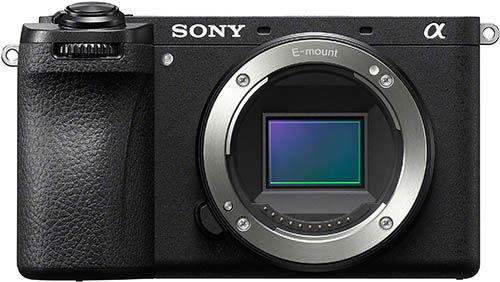
Lenses from other manufactures such as Canon can also be used providing you use an appropriate lens adapter.
However, native Sony E-mount lenses will always offer the best autofocus performance compared to adapted lenses therefore I wouldn’t recommend an adapted lens if you enjoy shooing fast action sports of birds in flight.
Top 13 Lens Recommendations in 2025
Including third-party lenses there are over two hundred E-mount lenses on the market today. This can make choosing the best lens for your Sony A6700 quite the challenge, especially if you are new to Sony’s ecosystem.
To help make your life a little easier I’ve summarised thirteen of the best lenses available today for the A6700, including some third-party lenses that are well worth considering.
If you want to see every single E-mount lens available, please visit my Complete Sony E-Mount Lenses List which also includes the latest firmware updates for each lens.
All of these lenses are fully compatible with the Sony A6700:
1. Sony E 10-20mm F4 PZ G

If you are looking for the smallest, lightest ultra-wide APS-C power zoom with a wide maximum aperture of F4 then you don’t really need to look much further than the Sony E 10-20mm F4 PZ G lens.
It’s well built, weather sealed and delivers excellent image quality for both stills and video shooters.
With a wide 10-20mm focal length, power zoom and breathing compensation support, this is a great choice for Vloggers too.
Two linear focus motors help to ensure fast, quiet and accurate autofocus and the power zoom control instantly translates zoom ring motion to zoom operation.
This is an internal zoom lens so the lens does not change length when zooming making it ideal to use with gimbals.
Although their is no stabilization built into the lens body it can make full use of the Sony A6700’s 5-axis in-body stabilization to help keep your subjects steady.
This lens also supports focus breathing when used together with cameras that support it, fortunately the A6700 does support focus breathing.
It measures just 55mm long and weighs a mere 178 grams (2-1/4 inches, 6.3oz.), you will barely notice this lens mounted to your Sony A6700.
Key Specs
| Model Name: | SELP1020G |
| Format: | APS-C |
| Focal Length (mm): | 10-20 |
| Angle of View (APS-C): | 109°-70° |
| Maximum Aperture: | F4 |
| Minimum Aperture: | F22 |
| Lens Groups / Elements: | 8/11 |
| Aperture Blades: | 7 circular |
| Minimum Focusing Distance: | 0.20 m (AF), Wide: 0.13 m / Tele: 0.17 m (MF) ((0.66 ft (AF), Wide: 0.43ft / Tele: 0.56 ft (MF)) |
| Maximum Magnification Ratio: | 0.14(AF),0.18(MF) |
| Lens Image Stabilization: | No but supports A6700 In-body stabilization |
| Focus Breathing Support: | Yes |
| Filter Diameter: | 62 mm |
| Diameter: | 2-3/4 in. / 69.8 mm |
| Length: | 2-1/4 in. / 55.0 mm |
| Weight: | 6.3 oz. / 178 g |
Pros
- Very nice build quality
- Compact and weather sealed
- Useful PowerZoom function
- Fast and quiet linear focus motors
- Minimal focus breathing
- Excellent sharpness and contrast
- Good flare resistance
- Lovely bokeh
- Good control of chromatic aberrations
Cons
- No image stabilization
- Barrel distortion at 10mm
What’s in the Box
- Sony E 10-20mm F4 PZ G
- Hood (model): ALC-SH169
- Lens front cap: ALC-F62S
- Lens rear cap: ALC-R1EM
- Case
Review
If you’d like to learn more about the Sony E 10-20mm F4 PZ G lens I’d recommend watching this review from Christopher Frost.
2. Sigma 10-18mm F2.8 DC DN
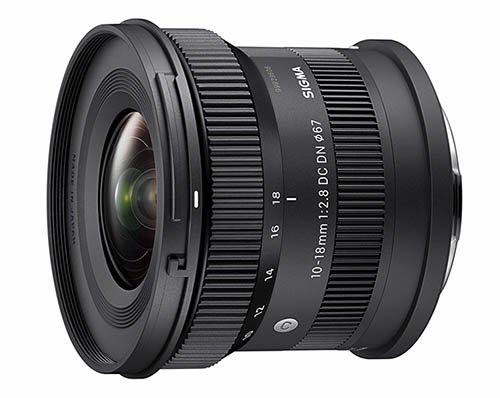
The Sigma 10-18mm F2.8 DC DN is the smallest, lightest F2.8 zoom lens for APS-C cameras and has undoubtedly been designed to compete with Sony’s E 10-20mm f/4 PZ G lens.
The lens is constructed of 13 elements in 10 groups, including three fluorite-like FLD elements, one super-low dispersion element and four aspheric lenses.
It uses an internal focus design driven by a fast and quiet stepper motor. The minimum focussing distance is 11.6cm (4.6″) and there’s a maximum magnification ratio of 1:4.
The lens does extend as you zoom out but only a small amount so there is minimal impact on the handling.
Focus breathing is minimal, making it well-suited to video work as well as landscape and travel photography.
The lens is very sharp across the frame and zoom range even at its maximum aperture of F2.8.
There is some barrel distortion and vignetting at 10mm / F2.8 with camera corrections turned off and some pincushion distortion and vignetting at 18mm / F2.8.
The lens measures 72.2mm × 64.0mm / φ2.8in. × 2.5in. for Sony E-mount and weighs in at 255g / 9.0oz.
Key Specs
| Model Name: | C023 |
| Format: | APS-C |
| Focal Length (mm): | 10-18 |
| Angle of View (APS-C): | 109.7°-76.5° |
| Maximum Aperture: | F2.8 |
| Minimum Aperture: | F22 |
| Lens Groups / Elements: | 10/13 |
| Aperture Blades: | 7 |
| Minimum Focusing Distance: | 11.6 (W) -19.1 (T) cm / 4.6 (W) -7.6 (T) |
| Maximum Magnification Ratio: | 1:4 (W) – 1:6.9 (T) |
| Lens Image Stabilization: | No but supports A6700 In-body stabilization |
| Focus Breathing Support: | No (but focus breathing is minimal) |
| Filter Diameter: | 67 mm |
| Diameter: | 2.8 in. / 72.2 mm |
| Length: | 2.5 in. / 64 mm |
| Weight: | 9.0 oz. / 255 g |
Pros
- Fast F2.8 maximum aperture
- Small, light and well built
- Reasonably priced
- Dust and splash resistant
- Fast, quiet and accurate autofocus
- Very sharp throughout the focal length even at F2.8
- Glare well controlled
- Coma and chromatic aberrations well controlled
Cons
- Barrel distortion and vignetting at 10mm / F2.8 with camera corrections turned off
- Some pincushion distortion and vignetting at 18mm / F2.8 with camera corrections turned off
What’s in the Box
- Sigma 10-18mm F2.8 DC DN lens
- Lens hood: LH706-02
- Front cap: LCF-67mm Ⅲ
- Rear cap: LCR Ⅱ
Review
To learn more about the Sigma 10-18mm F2.8 DC DN lens I’d recommend watching this review from Gordon Laing.
Price Check & Reviews: Sigma 10-18mm F2.8 DC DN
At: B&H Photo | Amazon
3. Sigma 16mm F1.4 DC DN Contemporary
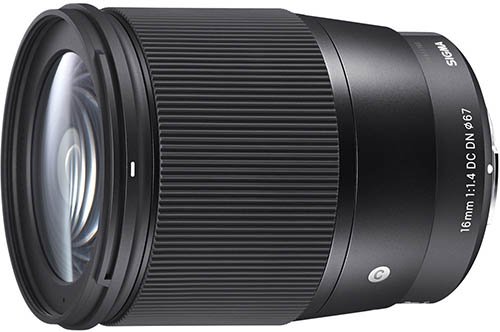
The Sigma 16mm F1.4 DC DN Contemporary is part of a trio of Sigma lenses that deliver excellent image quality at a very reasonable price.
With a fast F1.4 maximum aperture this lens lets in lots and lots of light! So it’s perfect if you shoot a lot in low light conditions.
The lens does not have stabilization built-in but it fully supports the Sony A6700’s in-body stabilization.
With very good sharpness at f/1.4 and exceptional sharpness and contrast from f/2, you’ll struggle to find a sharper 16mm lens for the price.
Key Specs
| Model Name: | C017 |
| Format: | APS-C |
| Focal Length (mm): | 16 |
| Angle of View (APS-C): | 83.2° |
| Maximum Aperture: | F1.4 |
| Minimum Aperture: | F16 |
| Lens Groups / Elements: | 13/16 |
| Aperture Blades: | 9 circular |
| Minimum Focusing Distance: | 25cm / 9.8in. |
| Maximum Magnification Ratio: | 1:9.9 |
| Lens Image Stabilization: | No but supports A6700 In-body stabilization |
| Focus Breathing Support: | No |
| Filter Diameter: | 67 mm |
| Diameter: | 2.8 in. / 72.2 mm |
| Length: | 3.6 in. / 92.3 mm |
| Weight: | 14.3 oz. / 405 g |
Pros
- Well built and weather sealed
- Quick, quiet, and accurate autofocus
- Very good sharpness at f/1.4, exceptional sharpness and contrast from f/2
- Good flare resistance
- Well priced
Cons
- A little chromatic aberration at f/1.4
- Coma performance not the best
- Minor distortion remains after correction
What’s in the Box
- Sigma 16mm F1.4 DC DN Contemporary lens
- Lens hood: LH716-01
- Front cap: LCF-67mm III
- Rear cap: LCR II
Review
To learn more about the Sigma 16mm F1.4 DC DN Contemporary lens I’d recommend watching this review from Arthur R.
4. Sony E 16-55mm F2.8 G
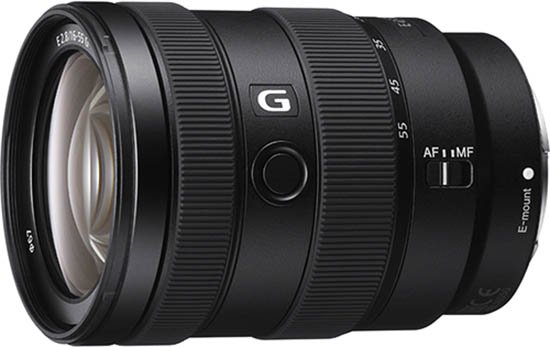
If you require a little more focal length but still require a fast aperture then the Sony E 16-55mm F2.8 G lens is worth taking a closer look at.
This lens has excellent corner-to-corner sharpness and beautiful bokeh thanks to a 9-blade circular aperture. It is compact, lightweight, and perfect for a wide range of subjects.
The XD Linear Motor that is also used in the more expensive GM lenses helps the lens to focus on and track even fast-moving subjects with outstanding speed, precision and quietness.
On the lens body you’ll find a customizable focus hold button, AF/MF mode switch, and Linear Response manual focus ring.
The front lens element is fluorine coated to repel water and grime, and the lens is dust and moisture resistant.
Key Specs
| Model Name: | SEL1655G |
| Format: | APS-C |
| Focal Length (mm): | 16-55 |
| Angle of View (APS-C): | 83°-29° |
| Maximum Aperture: | F2.8 |
| Minimum Aperture: | F22 |
| Lens Groups / Elements: | 12/17 |
| Aperture Blades: | 9 circular |
| Minimum Focusing Distance: | 1.09 ft (0.33 m) |
| Maximum Magnification Ratio: | 0.2x |
| Lens Image Stabilization: | No but supports A6700 In-body stabilization |
| Focus Breathing Support: | No |
| Filter Diameter: | 67 mm |
| Diameter: | 2 7/8 in. / 73 mm |
| Length: | 4 in. / 100 mm |
| Weight: | 17.5 oz / 494 g |
Pros
- Well built and compact zoom lens
- Weather sealed
- Quick, accurate and quiet autofocus XD linear focus motor
- Excellent image quality with auto corrections enabled
Cons
- Relies on lens profile corrections to remove distortion
- Quite expensive
What’s in the Box
- Sony E 16-55mm F2.8 G lens
- Hood (model): ALC-SH161
- Lens front cap: ALC-F67S
- Lens rear cap:
- ALC-R1EM Soft case
Review
To learn more about the Sony E 16-55mm F2.8 G lens I’d recommend watching this review from Arthur R.
5. Tamron 17-70mm f/2.8 Di III-A VC RXD
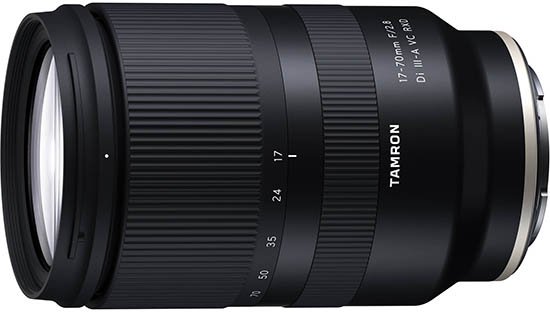
If the Sony E 16-55mm F2.8 G is a little too expensive then then a more affordable alternative is the Tamron 17-70mm f/2.8 Di III-A VC RXD lens.
Covering a useful focal length of 17-70mm and with a fast maximum aperture of F2.8, this is a great lens for low light shooting. Whether you enjoy landscape photography, architecture, interior, street or portraits, this lens can do it all.
The 17-70mm includes Tamron’s proprietary VC (Vibration Compensation) built into the lens body, but you can also take advantage of in-body stabilization with the A6700.
This lens has a minimum focusing distance of just 0.19m (7.5 in) at the wide-angle end and 0.39m (15.4 in) at the telephoto end, helping you to get closer than ever to your subjects.
This is a well built and weather sealed lens that delivers excellent sharpness across the frame. The autofocus motors are also fast, quiet and accurate.
Key Specs
| Model Name: | B070S |
| Format: | APS-C |
| Focal Length (mm): | 17-70 |
| Angle of View (APS-C): | 79° 55′ -23° 00′ |
| Maximum Aperture: | F2.8 |
| Minimum Aperture: | F22 |
| Lens Groups / Elements: | 12/16 |
| Aperture Blades: | 9 circular |
| Minimum Focusing Distance: | 0.19m (WIDE), 0.39m (TELE) |
| Maximum Magnification Ratio: | 1:4.8 (WIDE), 1:5.2 (TELE) |
| Lens Image Stabilization: | Yes and supports A6700 In-body stabilization |
| Focus Breathing Support: | No |
| Filter Diameter: | 67 mm |
| Diameter: | 2.94 in. / 74.6 mm |
| Length: | 4.70 in. / 119.3 mm |
| Weight: | 18.52 oz. / 525 g |
Pros
- Very useful zoom range
- Maximum F2.8 aperture
- Good build quality and weather sealing
- Fast, quiet, and accurate autofocus
- Good image stabilization built-in(VC)
- Exceptional optical performance
- Very good flare resistance
- Excellent price
Cons
- Onion bokeh balls
- No switches or buttons on the lens
What’s in the Box
- Tamron 17-70mm f/2.8 Di III-A VC RXD Lens for Sony E
- Tamron SP Front Lens Cap (67mm)
- Rear Lens Cap
- HA036 Lens Hood
- Limited 6-Year Manufacturer Warranty
Review
To learn more about the Tamron 17-70mm f/2.8 Di III-A VC RXD lens I’d recommend watching this review from Jason Vong.
6. Sony E 18-135mm F3.5-5.6 OSS

The Sony E 18-135mm F3.5-5.6 OSS is an APS-C lens that does everything really well. It’s small and lightweight and one of my personal favorite travel lens for when I want to travel as light as possible.
It covers a wide focal range from 18mm all the way up to 135mm and has a variable aperture of f/3.5 up to f/5.6.
Central sharpness at 18mm is very good and this improves further from f/5.6 all the way up to f/11. At 35mm sharpness is excellent from f/3.5 up to f/11 then starts to drop off at f/16. At 70mm and 135mm central sharpness is excellent from f/5.6 to f/11, but starts to drop at f/16. The edges are a little soft when using the longer focal lengths, but the center always remains sharp.
There is strong vignetting at 18mm if you are shooting in raw or with in-camera corrections turned off, this doesn’t improve if you step down either. In order to keep this lens compact Sony are relying more heavily on in-camera corrections.
CA (Chromatic Aberration) centrally at 18mm is very well controlled, however the edges do show signs of fringing. This improves up to 70mm, but then at 135mm things become worse. Fortunately in-camera corrections take care of this, so if you are shooting in JPEG you don’t need to worry about it. Flare control is excellent and the bokeh is very smooth.
The Sony E 18-135mm F3.5-5.6 OSS lens also includes the inbuilt OSS (Optical Steady Shot) system which helps to stabilize camera shake on cameras that do not have IBIS built-in.
The autofocus motor is both fast and silent, and the lens feels well built. Sadly it is not weather sealed, so you need to be a little more careful with this lens when the heavens open.
Key Specs
| Model Name: | SEL18135 |
| Format: | APS-C |
| Focal Length (mm): | 18-135 |
| Angle of View (APS-C): | 76°-12° |
| Maximum Aperture: | F3.5-5.6 |
| Minimum Aperture: | F22-36 |
| Lens Groups / Elements: | 12/16 |
| Aperture Blades: | 7 circular |
| Minimum Focusing Distance: | 1.48 ft (0.45 m) |
| Maximum Magnification Ratio: | 0.29x |
| Lens Image Stabilization: | Yes and supports A6700 In-body stabilization |
| Focus Breathing Support: | No |
| Filter Diameter: | 55 mm |
| Diameter: | 2.75 in. / 69.85 mm |
| Length: | 3.5 in. / 88.9 mm |
| Weight: | 11.5 oz / 325 g |
Pros
- Nice build quality
- Lightweight
- Quiet and accurate autofocus
- Very good image quality
- Optical steadyshot built-in stabilization
- Price
Cons
- Relies on correction profiles to correct vignetting
What’s in the Box
- Sony E 18-135mm F3.5-5.6 OSS Lens
- Hood (model): ALC-SH153
- Lens front cap: ALC-F55S
- Lens rear cap: ALC-R1EM
Review
To learn more about the Sony E 18-135mm F3.5-5.6 OSS lens I’d recommend watching this review from Dustin Abbott.
7. Sigma 30mm F1.4 DC DN Contemporary
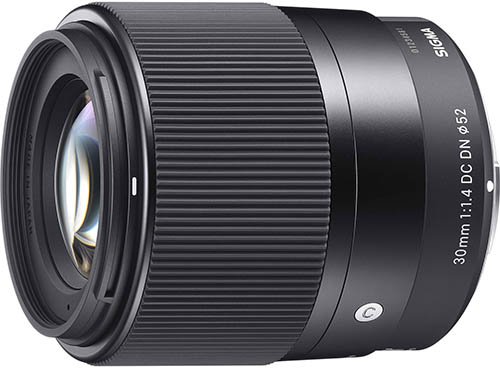
This is the second lens I’ve included in this guide that makes up the famous trio of Sigma APS-C lenses.
The Sigma 30mm F1.4 DC DN Contemporary lens is very well built just like all of Sigma’s lenses for Sony E-mount, it’s also one of the sharpest lenses available in their APS-C line-up.
There is some vignetting when shooting wide-open, with around 1 1/3 stops light lost in the extreme corners. However, stop down to f/1.8 and you’ll already see a big improvement here.
There is also some lateral CA but this is easily removed in post or corrected in camera with JPEGS. Barrel distortion is definitely present but again this can be corrected in camera or in post.
When shooting wide-open at f/1.4 the central sharpness from this lens needs to be seen to be believed as does the creamy smooth bokeh.
Key Specs
| Model Name: | C016 |
| Format: | APS-C |
| Focal Length (mm): | 30mm |
| Angle of View (APS-C): | 50.7° |
| Maximum Aperture: | F1.4 |
| Minimum Aperture: | F16 |
| Lens Groups / Elements: | 7/9 |
| Aperture Blades: | 9 circular |
| Minimum Focusing Distance: | 30 cm / 11.8 in. |
| Maximum Magnification Ratio: | 1:7 |
| Lens Image Stabilization: | No but supports A6700 In-body stabilization |
| Focus Breathing Support: | No |
| Filter Diameter: | 52 mm |
| Diameter: | 2.6in. / 64.8 mm |
| Length: | 2.9in. / 73.3mm |
| Weight: | 9.3 oz. / 265 g |
Pros
- Outstanding sharpness
- Well controlled CA
- Good flare resistance
- Fast and accurate AF
- Attractive price
Cons
- Not weather resistant
- Some barrel distortion
- A little vignetting at f/1.4
What’s in the Box
- Lens hood: LH586-01
- Front cap: LCF-52mm III
- Rear cap: LCR II
Review
To learn more about the Sigma 30mm F1.4 DC DN Contemporary lens I’d recommend watching this review from Stefan Malloch.
8. Sigma 56mm F1.4 DC DN Contemporary
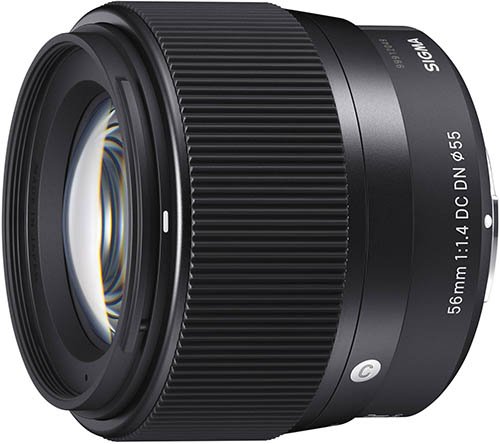
The Sigma 56mm F1.4 DC DN Contemporary lens completes the trio of Sigma prime lenses for the Sony APS-C E-mount system.
Just like both the Sigma 16mm and the 30mm, the Sigma 56mm f/1.4 DC DN Contemporary lens delivers excellent sharpness across the image frame.
Focusing is both fast and quiet, flare is well controlled and the build quality is very high.
There is a little chromatic aberration, mild vignetting and distortion, but in-camera corrections help to address these and if you shoot raw you can also correct in post.
The bokeh is smooth and with a full-frame equivalent focal length of 84mm when shooting on an APS-C body like the Sony A6700, this lens is a great choice for portrait photography.
Key Specs
| Model Name: | C018 |
| Format: | APS-C |
| Focal Length (mm): | 56mm |
| Angle of View (APS-C): | 28.5° |
| Maximum Aperture: | F1.4 |
| Minimum Aperture: | F16 |
| Lens Groups / Elements: | 6/10 |
| Aperture Blades: | 9 circular |
| Minimum Focusing Distance: | 50 cm / 19.7 in. |
| Maximum Magnification Ratio: | 1:7.4 |
| Lens Image Stabilization: | No but supports A6700 In-body stabilization |
| Focus Breathing Support: | No |
| Filter Diameter: | 55 mm |
| Diameter: | 2.6 in. / 66.5mm |
| Length: | 2.3 in. / 59.5mm |
| Weight: | 9.9 oz. / 280 g |
Pros
- Well built and weather sealed
- Compact and lightweight
- Exceptional sharpness across the frame
- Very good color rendition
- Excellent flare resistance
- Fast, accurate and silent autofocus
- Attractively priced
Cons
- Some pincushion distortion
What’s in the Box
- Lens hood: LH582-01
- Front cap: LCF-55mm III
- Rear cap: LCR II
Review
To learn more about the Sigma 56mm F1.4 DC DN Contemporary lens I’d recommend watching this review from Arthur R.
9. Sigma 18-50mm F2.8 DC DN Contemporary
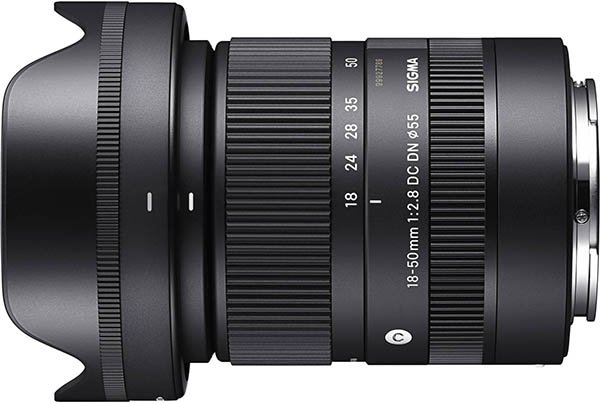
If you don’t want to carry the trio of Sigma primes then the Sigma 18-50mm F2.8 DC DN Contemporary is a fantastic alternative.
This lens has a very useful focal range from 18-50mm and a constant fast aperture of F2.8 across the zoom range.
Its compact and light weight body is weather sealed against the elements, but don’t expect it to survive a drop in the ocean!
The autofocus is fast and quiet and the lens is sharp across the focal range with very pleasing bokeh. Chromatic aberrations are well controlled but there is some lens flare in certain lighting situations.
For the price and performance this lens is really hard to beat.
Key Specs
| Model Name: | C021 |
| Format: | APS-C |
| Focal Length (mm): | 18-50 |
| Angle of View (APS-C): | 76.5°(W)-31.7°(T) |
| Maximum Aperture: | F2.8 |
| Minimum Aperture: | F22 |
| Lens Groups / Elements: | 10/13 |
| Aperture Blades: | 7 circular |
| Minimum Focusing Distance: | 12.1 (Wide) – 30 (Tele) cm / 4.8 in. (Wide) – 11.9 in. (Tele) |
| Maximum Magnification Ratio: | 1:2.8(Wide) – 1:5(Tele) |
| Lens Image Stabilization: | No but supports A6700 In-body stabilization |
| Focus Breathing Support: | No |
| Filter Diameter: | 55 mm |
| Diameter: | 2.4 in. / 61.6mm |
| Length: | 3.0 in. / 76.5mm |
| Weight: | 10.2 oz. / 290 g |
Pros
- Compact and light weight
- Fast and silent autofocus
- Reasonably priced
- Well made and weather sealed
- Constant F2.8 aperture
- Very little focus breathing
- Low chromatic aberrations
- Good sharpness across zoom range
- Pleasing bokeh
- Good coma performance
Cons
- No optical image stabilization
- Strong barrel distortion at 18mm
- Some flare in certain lighting situations
What’s in the Box
- Lens hood: LH582-02
- Front cap: LCF-55mm III
- Rear cap: LCR II
Review
To learn more about the Sigma 18-50mm F2.8 DC DN Contemporary lens I’d recommend watching this review from Arthur R.
9. Sony FE 70-200mm F4 Macro G OSS Ⅱ
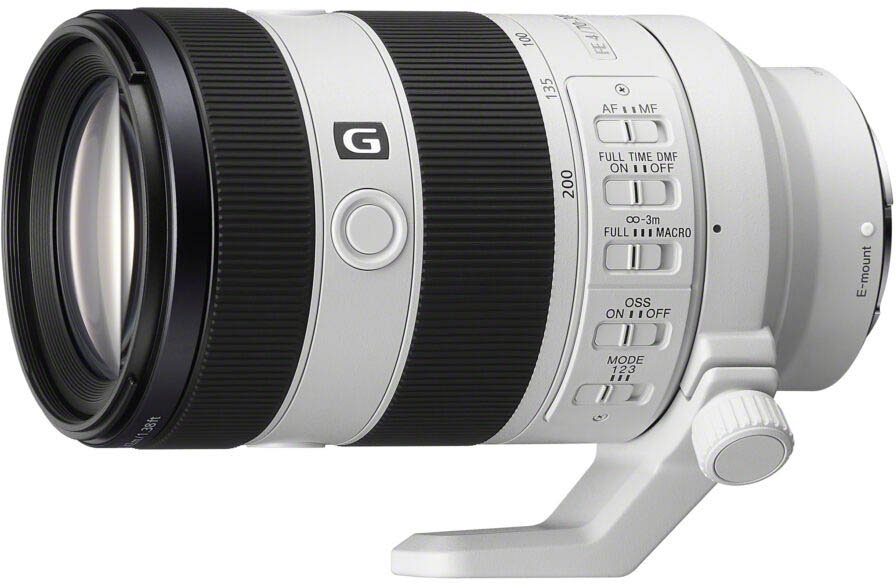
The Sony FE 70-200mm F4 Macro G OSS Ⅱ lens is the second generation of one of Sony’s earliest E-mount lenses first released in 2014.
Sony say that they have improved the AF by 20%. It’s also 15% lighter and 15% shorter that the Mark I. The 1.4x and 2x teleconverters are now also supported which were not supported with the Mark I lens.
Focus is powered by two independently moving focus groups driven by four XD ‘High thrust’ linear motors (two per group) which allow the lens to focus down to just 26 cm (10.2″).
A maximum magnification of 0.5x is the reason this lens has Macro in its name. Although not a true 1:1 macro lens if you attach the 2x teleconverter you will now have 1x magnification.
Focus breathing is minimal and this can also be reduced further by the breathing compensation function on compatible cameras like the A6700.

The lens is composed of 19 elements in 13 groups, including one advanced aspherical element, three extra-low dispersion (to reduce chromatic aberration), one ED aspherical element and one conventional aspherical lens.
On the lens body you’ll find independent control rings for focus and zoom. There’s a full-time DMF on/off switch, a focus-range limiter, Mode 1, Mode 2, and Mode 3 optical image stabilisation, an AF/MF switch and a zoom lock.

Optically the lens delivers exceptional sharpness and contrast throughout the zoom range, low distortion and vignette and stunning bokeh.
I own both the Mark I and Mark II versions of this lens and hope to put together an in-depth comparison very soon. Until then you’ll just have to take my word that’s it’s definitely worth the upgrade!
Key Specs
| Model Name: | SEL70200G2 |
| Format: | 35 mm full frame |
| Focal Length (mm): | 70-200 mm |
| Angle of View (35 mm): | 34°-12° 30′ |
| Maximum Aperture: | F4 |
| Minimum Aperture: | F22 |
| Lens Groups / Elements: | 13-19 |
| Aperture Blades: | 9 circular |
| Minimum Focusing Distance: | 0.26-0.42 m(0.86-1.38 ft) |
| Maximum Magnification Ratio: | 0.5x |
| Lens Image Stabilization: | Yes |
| Filter Diameter: | 72 mm |
| Diameter: | 3-1/4″ / 82.2 mm |
| Length: | 5-7/8″ / 149 mm |
| Weight: | 28.1 oz. / 794 g |
Pros
- Small and compact
- Good build quality and weather sealing
- Very fast and quiet autofocus motors
- Compatible with Sony’s 1.4x and 2x teleconverters
- Exceptional resolution and contrast throughout the zoom range
- Lovely bokeh
- Low distortion and vignette
- Flare resistance
- Minimal focus breathing
- Removable tripod collar
Cons
- Pincushion distortion throughout the zoom range
- Tripod foot not Arca-compatible (like all of Sony’s lenses)
- External zoom but this does make it more travel and backpack friendly
What’s in the Box
- Sony FE 70-200mm F4 Macro G OSS Ⅱ lens
- Lens hood: ALC-SH176
- Lens front cap: ALC-F72S
- Lens rear cap: ALC-R1EM
Review
If you would like to learn more about the Sony FE 70-200mm F4 Macro G OSS Ⅱ lens then I’d highly recommend this excellent review from Dustin Abbott.
11. Sony E 70-350mm F4.5-6.3 G OSS
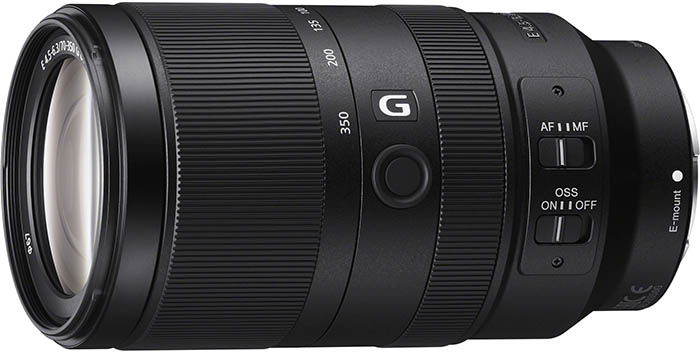
The Sony E 70-350mm F4.5-6.3 G OSS lens is very well built and surprisingly compact in size for the 70-350mm zoom range that it offers.
On the Sony A6700 this lens offers the full-frame equivalent of 525mm at its maximum zoom.
The lens it weather sealed and features Sony’s OSS (optical steadyshot) built-in stabilization.
The autofocus is driven by Sony’s original XD (extreme dynamic) linear motor technology, offering top-class autofocus performance that is fast, quiet and precise.
On the lens body you’ll find two rings to control the zoom and focusing. There’s also a lock switch to prevent the zoom extending, an AF/MF switch and an OSS on/off switch. There’s also a customizable focus hold button.
Image quality is excellent and chromatic aberrations are handled well.
When coupled with the advanced real-time AF capability of the Sony A6700, you have a high-performance, easy-handling combination for shooting anything where a little extra reach is required.
This lens is an excellent choice for shooting landscapes, wildlife, sports, or any other form of action, especially when paired with the Sony A6700.
Key Specs
| Model Name: | SEL70350G |
| Format: | APS-C |
| Focal Length (mm): | 70-350 |
| Angle of View (APS-C): | 22°-4°40′ |
| Maximum Aperture: | F4.5-6.3 |
| Minimum Aperture: | F22-32 |
| Lens Groups / Elements: | 13/19 |
| Aperture Blades: | 7 circular |
| Minimum Focusing Distance: | 3.61–4.93 ft (1.1–1.5 m) |
| Maximum Magnification Ratio: | 0.23x |
| Lens Image Stabilization: | Yes and supports A6700 In-body stabilization |
| Focus Breathing Support: | No |
| Filter Diameter: | 67 mm |
| Diameter: | 3-1/8 in. / 77 mm |
| Length: | 5-5/8″ in. / 142 mm |
| Weight: | 22.1 oz / 625 g |
Pros
- Very well built and weather sealed
- OSS (optical steadyshot) built-in
- Extremely fast and quiet autofocus
- Excellent sharpness and contrast
- Lovely bokeh
- Good control of chromatic aberrations
- Low vignette
Cons
- Quite expensive
- Prone to flaring
- A little pincushion distortion
- No focus limiter switch
What’s in the Box
- Sony E 70-350mm F4.5-6.3 G OSS lens
- Hood (model): ALC-SH160
- Lens front cap: ALC-F67S
- Lens rear cap: ALC-R1EM
Review
To learn more about the Sony E 70-350mm F4.5-6.3 G OSS lens I’d recommend watching this review from Arthur R.
12. Sony FE 90mm F2.8 Macro G OSS

The Sony FE 90mm f/2.8 Macro G OSS lens, despite its classification as a macro lens, proves to be a very versatile performer, excelling not only in close-up photography but also as an exceptional portrait lens. In fact, it is hailed as one of the sharpest lenses ever crafted by Sony.
DxOMark reviewed this lens and said that its outstanding. It also scored higher marks than both the Canon and Nikon equivalents.
This is a full-frame lens so on an APS-C body like the A6700 the equivalent field of view will be 135mm.
For such an exceptional lens it is challenging to find some flaws, if I were to be extremely picky, then the autofocus performance could be faster, and the manual focus ring adjustments could offer a finer level precision.
Constructed from 15 elements in 11 groups and featuring a 9-bladed circular aperture, this is a very well built lens.
As a macro lens, it provides a magnification ratio of 1.0x and a minimum focusing distance of 0.92 ft (0.28 m). Additionally, it incorporates built-in optical stabilization for added image stabilization benefits.
When it comes to shooting portraits, this lens shines with its remarkable sharpness. However, it’s worth noting that due to its exceptional detail, it may not be the best choice if you prefer to soften or minimize imperfections such as spots, blemishes, or wrinkles on your subjects.

If you’re in search of a versatile lens that excels in both macro and portrait photography, the 90mm F2.8 Macro G OSS lens is the perfect choice.
I do own this lens myself and I would really struggle to find a reason to let it go.
Key Specs
| Model Name: | SEL90M28G |
| Format: | 35 mm full frame |
| Focal Length (mm): | 90 mm |
| Angle of View (35 mm): | 27° |
| Maximum Aperture: | F2.8 |
| Minimum Aperture: | F22 |
| Lens Groups / Elements: | 11/15 |
| Aperture Blades: | 9 circular |
| Minimum Focusing Distance: | 0.92 ft (0.28 m) |
| Maximum Magnification Ratio: | 1.0x |
| Lens Image Stabilization: | Yes |
| Focus Breathing Support: | No |
| Filter Diameter: | 62 mm |
| Diameter: | 3-1/8″ / 79mm |
| Length: | 5-1/4″ / 130.5 mm |
| Weight: | 21.3 oz (602 g) |
Pros
- Incredible sharpness at all apertures
- Excellent color rendition
- Chromatic aberrations are well controlled
- very well built
- Price
Cons
- Autofocus isn’t the fastest
- Manual focus could allow for finer adjustments
What’s in the Box
- Sony FE 90mm F2.8 Macro G OSS lens
- Lens hood: ALC-SH138
- Lens front cap
- Lens rear cap
- Case
Review
If you’d like to learn more about the Sony FE 90mm F2.8 Macro G OSS lens then this review from Pav is well worth watching.
13. Sony FE 200-600mm F5.6-6.3 G OSS
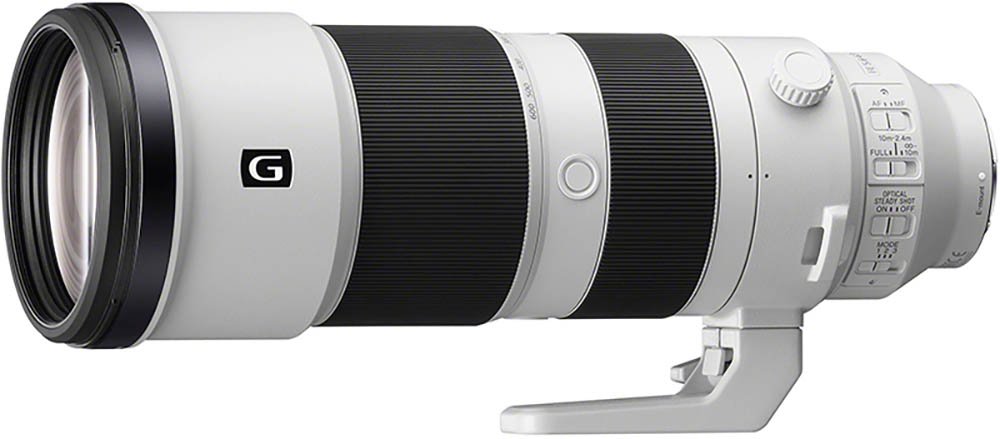
The Sony FE 200-600mm F5.6-6.3 G OSS lens is an exceptional lens for wildlife and sports photographers seeking a powerful telephoto lens.
This is a full-frame lens with a versatile focal range of 200-600mm on a full-frame body which is the equivalent field of view of 300-900mm on an APS-C camera like the Sony A6700. That’s quite the reach!
If you desire even greater reach then this lens is compatible with both the 1.4x and 2.0x teleconverters.
Constructed of 24 elements in 17 groups, this lens measures 318mm in length and weighs 74.7 oz (2,115 g) without the tripod mount. It is weather sealed and also incorporates 3-mode image stabilization.
With its impressive reach and image quality, the Sony FE 200-600mm F5.6-6.3 G OSS lens is an invaluable tool for capturing wildlife and sports photos.

The Sony FE 200-600mm F5.6-6.3 G OSS lens features an internal zoom mechanism, contributing to better balance and handling compared to external zoom lenses like the Sony FE 100-400. Additionally, its short zoom throw allows for an effortless and fast transition from 200mm to 600mm focal lengths.
The lens body is equipped with essential controls, including a focus ring and a zoom ring. Other convenient features include a focus limiter switch, an AF/MF switch, a Steady Shot on/off switch, a mode 1/2/3 optical stabilization switch, and a customizable focus hold button.
The tripod foot is removable and therefore can be replaced with something more practical like the Kirk LP-68 (B&H Photo) that includes an arca-swiss plate.

At 600mm this lens is sharper than the Sony FE 100-400 + 1.4x teleconverter is at 560mm. At 400mm this lens is also a touch sharper than the 100-400 which considering it’s a G lens and not a GM lens is really quite outstanding.
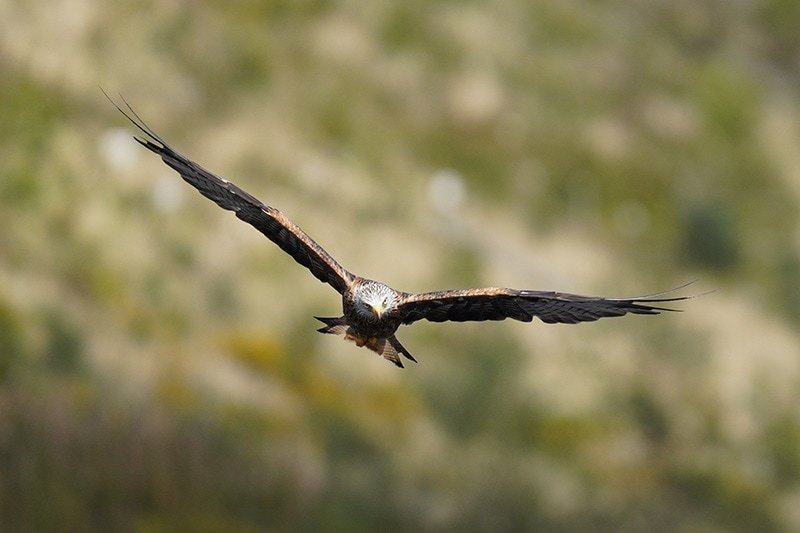
If you’d like to find out how this lens stacks up against the Sony FE 100-400 GM lens then head over to my 200-600 vs 100-400 comparison.
Otherwise, if you are looking for the best 600mm zoom lens to mount to your A6700, then look no further than the Sony FE 200-600mm F5.6-6.3 G OSS lens.
Key Specs
| Model Name: | SEL200600G |
| Format: | 35 mm full frame |
| Focal Length (mm): | 200-600 mm |
| Angle of View (35 mm): | 12°30’–4°10′ |
| Maximum Aperture: | F5.6–6.3 |
| Minimum Aperture: | F32–36 |
| Lens Groups / Elements: | 17/24 |
| Aperture Blades: | 11 circular |
| Minimum Focusing Distance: | 7.88 ft (2.4 m) |
| Maximum Magnification Ratio: | 0.2x |
| Lens Image Stabilization: | Yes (3 modes) |
| Focus Breathing Support: | No |
| Filter Diameter: | 95 mm |
| Diameter: | 4.5″ / 114.3 mm |
| Length: | 12.625″ / 320.67 mm |
| Weight: | 74.7 oz (2,115 g) |
Pros
- Fantastic build quality and weather sealing
- Excellent handling thanks to the internal zoom design
- Very fast and accurate autofocus
- Excellent image quality
- 1.4x and 2x teleconverter support
Cons
- Large and relatively heavy
- Small tripod foot that is not arca-swiss compatible
- Some chromatic aberration when shooting wide open
What’s in the Box
- Sony FE 200-600mm F5.6-6.3 G OSS lens
- Hood (model): ALC-SH157
- Lens front cap: ALC-F95S
- Lens rear cap: ALC-R1EM
- Tripod collar
- Soft case
- Lens strap
Review
If you would like to learn more about the Sony FE 200-600mm F5.6-6.3 G OSS lens lens then this excellent review by Olle Nilsson is worth taking the time to watch.
You might also enjoy my own video of this lens where I compare the 200-600 to the Sony 100-400 with the 1.4x teleconverter for birds in flight photography.
Which Is the Best Travel Lens?
The Sony E 18-135mm F3.5-5.6 OSS is a great lightweight lens that covers a very useful focal range for travel use and it’s also very reasonably priced.
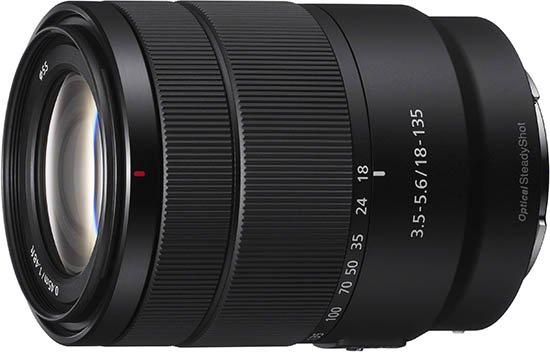
A good travel lens will strike a balance between image quality, weight, features and price. You’ll want a lens that will help you to capture the best possible images at the locations you are travelling to.
If you only want to take one lens then you’ll definitely want to go with a zoom lens that will cover a wide focal area.
On an APS-C camera like the A6700 you’ll probably only need a focal length greater than 70mm if you plan to shoot wildlife or distant subjects.
For landscape, city shots and portraits a wider angle lens such as 18-105, 24-70mm or 16-55mm would be well suited.
Which Is the Best Portrait Lens?
The Sony FE 50mm F2.5 G lens is an ideal lens for portrait photography with the A6700. It’s small, sharp, bright and very light in weight.
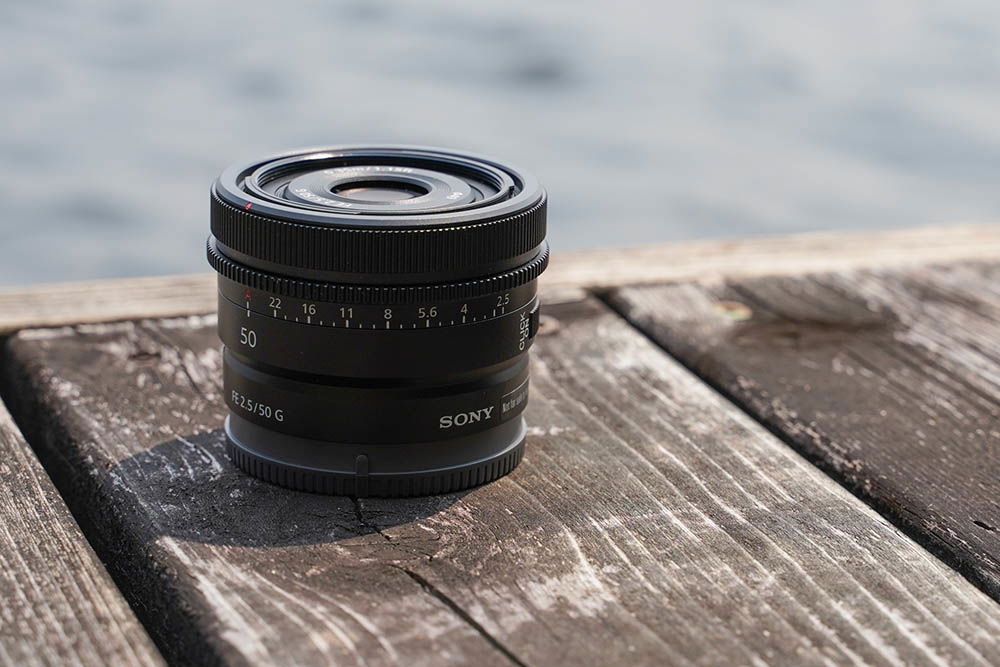
The maximum aperture of F2.5 is ideal for low light shooting and producing creamy backgrounds. It also features an aperture ring for additional manual control.
You can read our full review of the Sony FE 50mm F2.5 G lens here.
On an APS-C camera such as the A6700 an ideal portrait lens will be 50mm in focal length.
That said, you could use almost any focal length depending on the style of shot you are trying to achieve.
A maximum aperture of F2.8 or faster will allow you to create a nice separation between your subjects and the background and also provides more light for shooting indoors. Smaller apertures such as F4-F5.6 can still work well providing the shot is well lit.
Which is the Best Landscape Lens?
The Sony E 10-20mm F4 PZ G is one of the best landscape lens options for the Sony A6700. It’s an APS-C lens with a very affordable price tag.

With a wide focal-range from 10-20mm this lens will allow you to capture vast landscapes with ease.
If you’d prefer prime lens with a fixed focal length then the Sony E 15mm f/1.4 G Lens would be worth taking a close look at.
Which is the Best Wildlife Lens?
The Sony FE 200-600 F5.6-6.3 G OSS lens will help you to get closer to your subjects than ever before.

This lens handles well on the A6700 due to its internal zoom design but is more comfortable when you make use of a grip extension.
Both the 1.4x and 2x teleconverters are also supported with the 200-600mm allowing you to extend the reach to 900mm with the 1.4x and 1200mm with the 2x. But you will sacrifice one stop of light with the 1.4x and two stops with the 2x.
A good wildlife lens will be both sharp and fast to focus allowing you to track your subjects with ease and also still crop in if necessary without sacrificing image quality.
Complete List of Sony E-mount Lenses & Latest Firmware
Please visit my Sony E-Mount Lenses List for a complete list of Sony E-mount lenses compatible with the Sony A6700 including third-party lenses and the latest firmware versions.
Sony A6700 Lens FAQs
The Sony A6700 is compatible with both APS-C and full-frame Sony E-mount lenses. Third-parties such as Sigma and Tamron also produce compatible E-mount lenses.
Sony E-mount. Both APS-C lenses and full-frame E-mount lenses can be used.
Although the Sony A6700 has an APS-C sized sensor you can still use full-frame lenses if you wish. The only disadvantage is the additional size and cost of full-frame lenses.
Canon EF lenses can be used but only with an EF to E-mount lens adapter such as the one from Metabones or Sigma’s MC-11 adapter.
You can either purchase the Sony A6700 as body-only or you can purchase it with a kit lens. The kit lens options are typically the Sony E 16-50mm or E 55-210mm.
There are many great lenses for the A6700 but if I had to pick one it would be the Sony E 18-135mm F3.5-5.6 OSS. It’s a great lightweight lens that covers a useful focal range for travel use and it’s also very reasonably priced.
The Sony E 18-105 F4 G OSS lens is a great choice for video with the A6700. It has optical stabilization built-in, a power zoom rocker switch and it does not extend to zoom or focus making it ideally suited for gimbal use.
Sony A6700 Guides & Resources
Sony A6700 Forum & Facebook Group
If you are looking for further help and advice on the A6700 or would simply like to share your photos and videos, then please head over to our friendly APS-C Forum. If you prefer Facebook then I also run the Sony A6700 + A6600 Shooters Group.














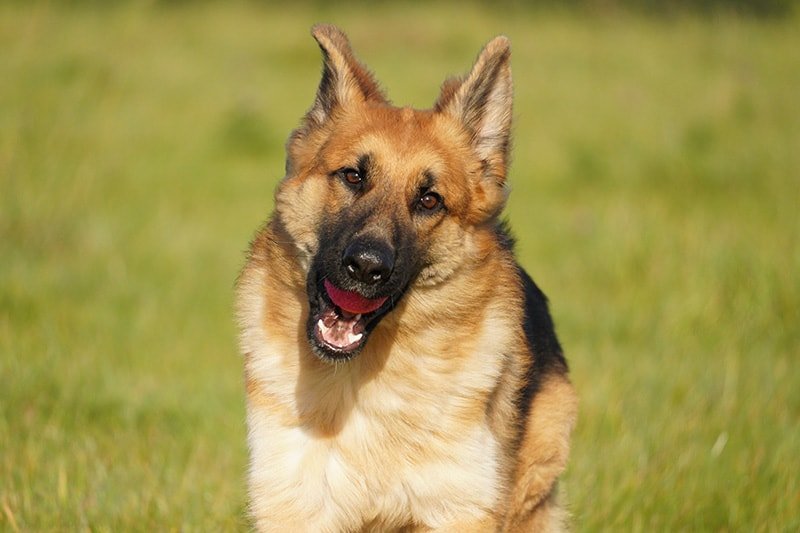





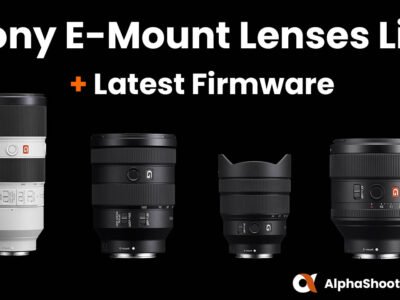
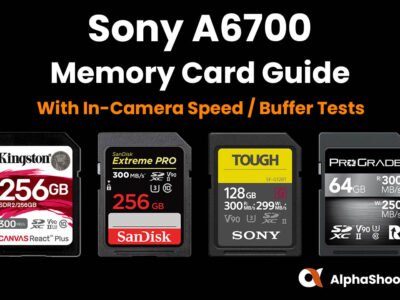

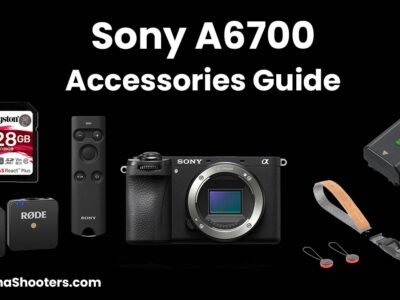
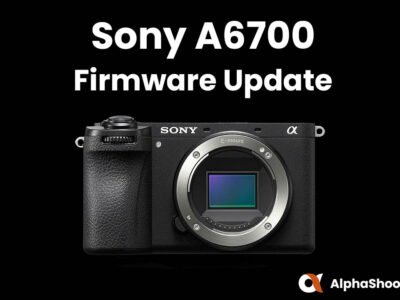
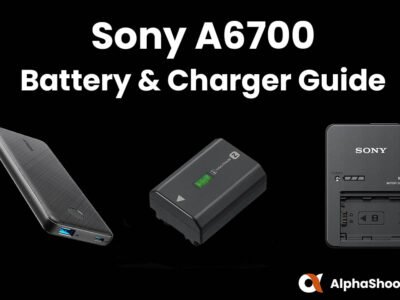



I appreciate your effort. You neglected to mention Tamron 18-300, a Sony 70-350 rival. Despite the Tamron lens’s superior feel, I usually opt for the Tamron because to its far greater versatility. You can eliminate the need to carry additional lenses when utilising the Tamron 18-300. Wide angle may be the lone exception if you are certain that you will require it.